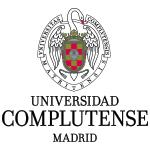Molecular characterization of Mycobacterium avium subspecies paratuberculosis Types II and III isolates by a combination of MIRU-VNTR loci
Investigation article published in Veterinary Microbiology
July 29th, 2010
Mycobacterial interspersed repetitive units and variable number tandem repeats typing (MIRU-VNTR) is a useful technique that has been recently applied to characterize members of the Mycobacterium avium complex (MAC). The aim of this study was to examine the genetic variability among a collection of Spanish M. avium subspecies paratuberculosis (M. a. paratuberculosis) isolates with a combination of MIRU-VNTR loci. For this purpose we tested six MIRU-VNTR loci (MIRU-2, MIRU-3, VNTR-25, VNTR-32, VNTR-292 and VNTR-259) in 70 M. a. paratuberculosis isolates of Types II and III that were recovered from 22 Spanish localities during a nine-year period (1998-2007). The combination of five loci (MIRU-2, MIRU-3, VNTR-25, VNTR-32 and VNTR-259) enabled the differentiation of 12 allelic profiles, with a resulting Hunter and Gaston discriminatory index (HGDI) of 0.84. Moreover, we obtained MIRU-VNTR patterns that were unique for each of the M. a. paratuberculosis types analyzed (II and III); other patterns were host-related or restricted to geographic areas. Therefore, this MIRU-VNTR approach could be a useful sub-typing molecular tool in order to get a better sense of the epidemiology of Johne`s disease. Copyright © 2010 Elsevier B.V. All rights reserved
Castellanos E., Romero B., Rodriguez-Campos S., de Juan L., Bezos J., Mateos A., Dominguez L. and Aranaz A.
 | Servicio de Micobacterias (MYC). Centro de Vigilancia Sanitaria Veterinaria (VISAVET). Universidad Complutense (UCM). |
 | Departamento de Sanidad Animal. Facultad de Veterinaria. Universidad Complutense (UCM). |
